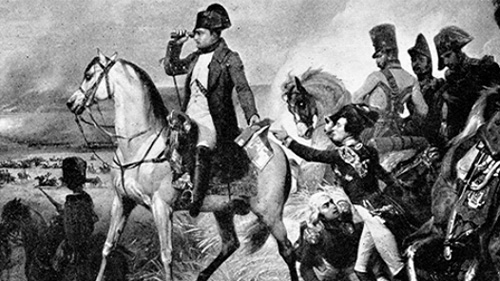APUSH: Start Small, Finish Strong—the SAQ
Early in a school year it can be a real challenge to know how to begin teaching students critical skills they need to score on the AP® U.S. History...
AP & Honors Mathematics
Explore Wiley titles to support both AP and Honors mathematics instruction.
Literacy Skills & Intensive Reading
Connections: Reading – Grades 6–12
Empower student success with a proven intensive reading program that develops strong reading skills in striving readers.
Drama, Speech & Debate
Basic Drama Projects 10th Edition
Build students’ confidence and competence with comprehensive, project-based theatre instruction.
Literature
Connections: Literature
Support learners as they study dynamic, relevant texts and bring the richness of diverse voices to students through literature.
Literature & Thought
Develop critical thinking, reading, and writing across literacy themes, genres, historical eras, and current events.
Language Arts
Vocabu-Lit® – Grades 6–12
Help students build word power using high-quality contemporary and classic literature, nonfiction, essays, and more.
Connections: Writing & Language
Help students develop grammar, usage, mechanics, vocabulary, spelling, and writing and editing skills.
Reading/English Language Arts
Measuring Up to the English Language Arts Standards
Incorporate standards-driven teaching strategies to complement your ELA curriculum.
English Language Learners
Measuring Up for English Language Learners
Incorporate research-based best practices for ELLs with an approach that includes a focus on language acquisition strategies.
Mathematics
Measuring Up to the Mathematics Standards
Incorporate standards-driven teaching strategies to complement your mathematics curriculum.
Foundations
Measuring Up Foundations
Help students master foundational math skills that are critical for students to find academic success.
Science
Measuring Up to the Next Generation Science Standards
Give students comprehensive NGSS coverage while targeting instruction and providing rigorous standards practice.
Assessment
Measuring Up Live
Deliver innovative assessment and practice technology designed to offer data-driven instructional support.
For a better website experience, please confirm you are in:
I have become obsessed with trying to find activities in the AP® World History classroom that foster analysis. Having students understand what is meant by the word “analysis” is hard enough, but then finding ways to develop it often seems to be an uphill battle. This activity came about as a result of this obsession. It combines the essential skill of answering LEQ-like prompts in a different and engaging way with embedded tricks to help students understand and develop their analytical skills.
To be successful on the AP® exam, students need to learn to write effectively by targeting the AP® World History writing rubric. They need to learn how to understand a prompt, develop a line of reasoning to answer that prompt (thesis), provide several examples to defend their line of reasoning (evidence), and offer insightful analysis to explain their reasoning while attempting to reach complexity in that analysis (analysis). A teacher often must employ all the strategies in their teaching arsenal to help students obtain these points on the AP® writing rubric. Doing ten-minute writing prompts, thesis exit slips, structured templates, three document DBQs, and full in-class essays (with feedback) all help teach students how to write. However, when writing gets monotonous (and it will), try this activity as an alternative. It allows you to have a little fun while practicing the thinking process needed to be successful on the AP® exam.
This activity is modeled after one of the longest running shows on television, Meet the Press. I am often impressed by how guests and experts on this show not only have to answer difficult questions but then are often asked to answer the “why” part to these questions. This show is loaded with phrases like “due to, because of, as a result of, in contrast to…” and so, it has been incorporated into this lesson as a way to teach analysis. This lesson is best used as a review at the end of the year (March/April) to practice essay prompts but can also be adapted and used at the end of an individual unit or time period. Once again, I think this lesson allows you to keep the academic rigor demanded from this course while allowing the flexibility to create a fun and engaging classroom.
This lesson starts by having students, as part of a group, select only one of 15 prompts to answer during a “live” Meet the Press taping in front of the class. Each student in the group will answer a different aspect of the prompt and will become an “expert” on their answer. Students will develop an argument, find evidence to support that argument, and then have to explain why that evidence supports their answer. Basically, it is an essay in an oral format. They are a guest on an in-class edition of Meet the Press and they must be able to answer their prompt effectively. However, it becomes more interactive in several regards.
All in all, it is a fun and engaging way to practice essay writing and develop the analytical skills listed in the AP® World History Thinking Skills (Habits of Mind).
Dave Drzonek is in his 23rd year of teaching at Carl Sandburg High School in Orland Park, Illinois, and has been teaching AP® World History since 2006. He is currently a Senior Reviewer and Writer for the AP® World History: Modern coursebook by AMSCO® and has developed and delivered AP® World History content for the online video-based AP® test prep service GetAFive. He has also been a reader for the Advanced Placement® World History Exam. He earned his M.A. in Teaching, Curriculum and Instruction at Governors State University in Illinois. He believes that there is no greater way to spend a lifetime than teaching.

Early in a school year it can be a real challenge to know how to begin teaching students critical skills they need to score on the AP® U.S. History...

Most AP® European History teachers try to pace their class by killing Napoleon prior to winter break. Hopefully the attached lesson plan will be...

The Supreme Court of the United States is often seen as the most distant and befuddling branch for my students. Whether it is misunderstanding their...

Contextualization is an intriguing skill introduced in the redesigned AP History courses. It plays a crucial role in multiple aspects of the courses,...

Even though it feels like the whirlwind of the school year just ended, it’s never too early to start thinking through what you want your course to...

In 2015, the College Board introduced several changes to the AP U.S. History course and exam. One significant addition was the inclusion of new...

For well over a millennium, Western Europe was unified by religious orthodoxy to the Roman Catholic Church. Although the church had been challenged...

With just one percent of students earning the complexity point on the 2021 AP® World History DBQ, is teaching it even worth it? John Maunu says,...

You know the Style #4 Free Response Question on the College Board’s national Government exam can be a real challenge. I am talking about the argument...

Cultural diffusion and cultural syncretism are two important concepts in the AP® World History curriculum. Because of its importance, I’ve developed...

The teaching of AP® World History can be a daunting task at times. Teachers are asked to teach over 800 years of historical content and then develop...

AP® Psychology is just as much a class with an abundance of new vocabulary as it is an introduction into the field of psychology. Students often...

